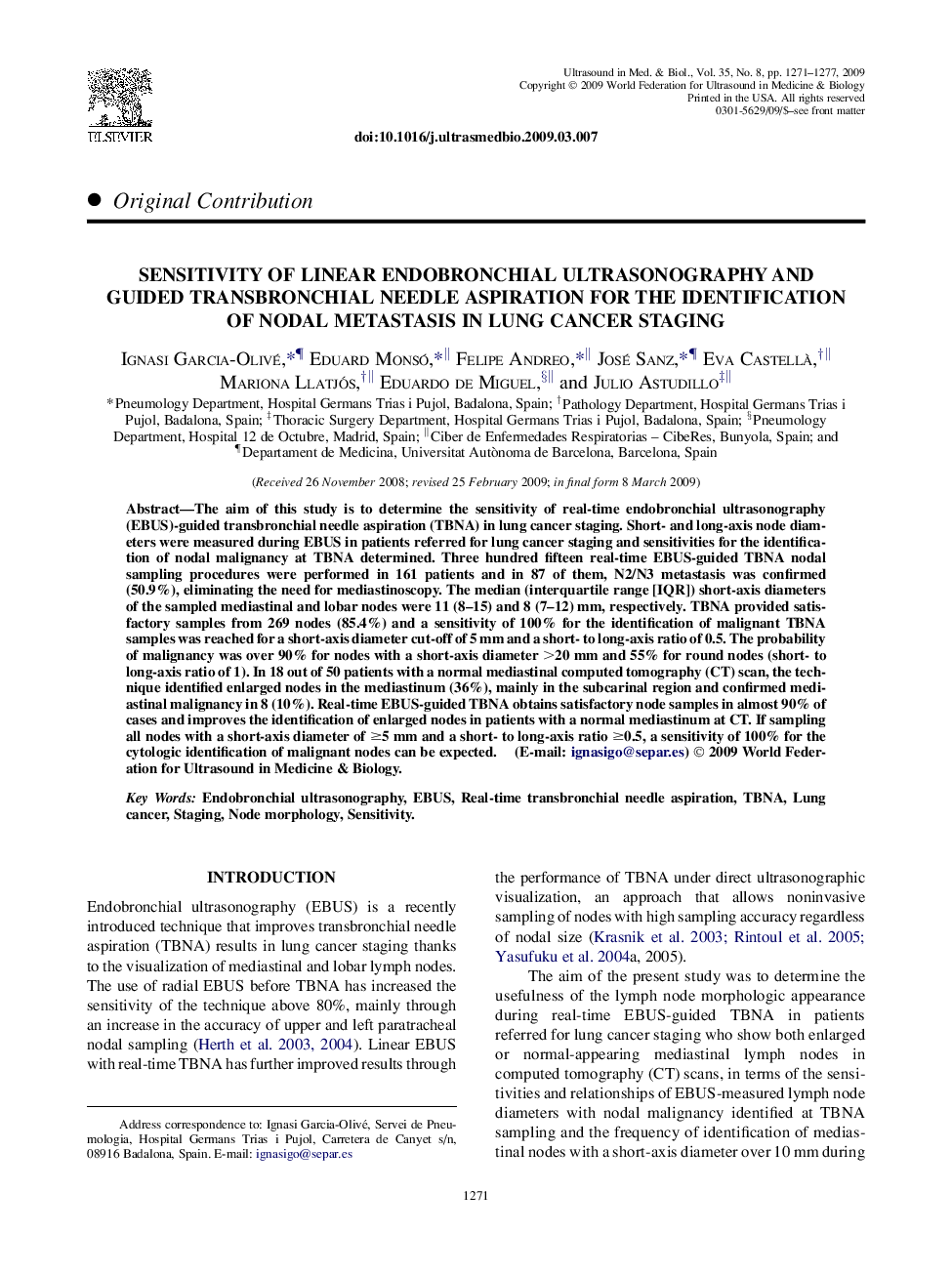| Article ID | Journal | Published Year | Pages | File Type |
|---|---|---|---|---|
| 1761414 | Ultrasound in Medicine & Biology | 2009 | 7 Pages |
Abstract
The aim of this study is to determine the sensitivity of real-time endobronchial ultrasonography (EBUS)-guided transbronchial needle aspiration (TBNA) in lung cancer staging. Short- and long-axis node diameters were measured during EBUS in patients referred for lung cancer staging and sensitivities for the identification of nodal malignancy at TBNA determined. Three hundred fifteen real-time EBUS-guided TBNA nodal sampling procedures were performed in 161 patients and in 87 of them, N2/N3 metastasis was confirmed (50.9%), eliminating the need for mediastinoscopy. The median (interquartile range [IQR]) short-axis diameters of the sampled mediastinal and lobar nodes were 11 (8-15) and 8 (7-12) mm, respectively. TBNA provided satisfactory samples from 269 nodes (85.4%) and a sensitivity of 100% for the identification of malignant TBNA samples was reached for a short-axis diameter cut-off of 5 mm and a short- to long-axis ratio of 0.5. The probability of malignancy was over 90% for nodes with a short-axis diameter >20 mm and 55% for round nodes (short- to long-axis ratio of 1). In 18 out of 50 patients with a normal mediastinal computed tomography (CT) scan, the technique identified enlarged nodes in the mediastinum (36%), mainly in the subcarinal region and confirmed mediastinal malignancy in 8 (10%). Real-time EBUS-guided TBNA obtains satisfactory node samples in almost 90% of cases and improves the identification of enlarged nodes in patients with a normal mediastinum at CT. If sampling all nodes with a short-axis diameter of â¥5 mm and a short- to long-axis ratio â¥0.5, a sensitivity of 100% for the cytologic identification of malignant nodes can be expected. (Email: ignasigo@separ.es)
Related Topics
Physical Sciences and Engineering
Physics and Astronomy
Acoustics and Ultrasonics
Authors
Ignasi Garcia-Olivé, Eduard Monsó, Felipe Andreo, José Sanz, Eva Castellà , Mariona Llatjós, Eduardo de Miguel, Julio Astudillo,
